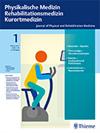颞下颌关节矫正治疗改善人体局部颞下颌关节紊乱的疼痛
IF 0.5
4区 医学
Q4 REHABILITATION
Physikalische Medizin Rehabilitationsmedizin Kurortmedizin
Pub Date : 2022-06-17
DOI:10.1055/a-1840-9458
引用次数: 0
摘要
背景与目的颞下颌关节紊乱病患者经常感到身体各部位疼痛。然而,通过颞下颌关节矫正术改善患者疼痛的程度尚未在一项独立研究中确定。本研究旨在确定颞下颌关节紊乱病患者最常报告的症状,并确定通过颞下颌关节矫正术的疼痛改善程度和结构变化。方法将主诉颞下颌关节紊乱并到牙科诊所就诊并同意参与的患者纳入研究(n=85)。将患者分为颞下颌关节非治疗组(对照组,n=35)和治疗组(治疗组,n=50),治疗组接受了10多次矫正治疗。在颞下颌关节矫正治疗干预前后记录所有报告的疼痛位置,并记录使用视觉模拟量表测量的疼痛程度。同时,进行X射线成像,以确认颞下颌关节矫正前和颞下颌关节后治疗的结构差异。结果颞下颌关节紊乱病患者以颞下颌关节疼痛为主(66/85),以颈部疼痛为主(61/85),肩部疼痛为主(60/85)。此外,还有许多头痛(n=26/85)、背痛(n=25/85)和下颌闭锁(n=22/85)的病例。在极少数情况下,报告了面部疼痛(n=2/85)、耳鸣(n=2/85%)、髋关节疼痛(n=4/85)、膝盖疼痛(n=5/85)、干燥瘤(n=1/85)和耳朵疼痛(n=1/85%)。颞下颌关节矫正治疗后,治疗组TMJ疼痛、头痛、肩部疼痛、颈部疼痛、背部疼痛和闭锁的视觉模拟量表评分显著低于治疗前(p<0.001)。此外,经证实,TMJ矫正治疗组的X射线图像中颅骨和下颌髁对称性的平衡显著改善(治疗前与治疗后,p<.001)。在对照组中,干预前后所有症状和X射线图像均未观察到显著差异。结论颞下颌关节紊乱可引起身体其他部位疼痛,但原因不明。因此,这些结果表明,如果不能从根本上解决身体其他部位的疼痛,可能需要在牙科诊所通过诊断颞下颌关节紊乱进行颞下颌关节矫正治疗。本文章由计算机程序翻译,如有差异,请以英文原文为准。
Improvement of the Pain of Temporomandibular Disorder in Parts of the
Human Body through Temporomandibular Joint Correction Treatment
Background and Aim Patients with temporomandibular disorder often
experience pain in various parts of the body. However, the degree of improvement
of patients’ pain through temporomandibular joint correction has not
been identified in an independent study. This study aimed to identify the
symptoms most frequently reported by patients with temporomandibular disorder
and determine the degree of pain improvement and structural changes through
temporomandibular joint correction.
Methodology Patients who complained of temporomandibular disorder and
visited a dental clinic and agreed to participate were included in the study
(n=85). The patients were divided into a nontreatment group
(Control, n=35) and treatment group (Treatment,
n=50) of the temporomandibular joint, and the treatment group
received more than 10 correction treatments. All reported locations of pain were
recorded preintervention and postintervention of temporomandibular joint
correction treatment, and the degree of pain, which measured using a visual
analog scale, was also recorded. Simultaneously, X-ray imaging was performed to
confirm the structural difference between the pre-temporomandibular joint and
post-temporomandibular joint correction treatment.
Result Most of the patients with temporomandibular disorder complained of
temporomandibular joint pain (n=66/85), but the majority
complained of neck pain (n=61/85) and shoulder pain
(n=60/85). In addition, there were many cases of
headache (n=26/85), back pain (n=25/85),
and lockjaw (n=22/85). In rare cases, complaints of
facial pain (n=2/85), tinnitus
(n=2/85), hip joint pain (n=4/85),
knee pain (n=5/85), xeroma
(n=1/85), and ear pain (n=1/85)
have been reported. After temporomandibular joint correction treatment, the
treatment group had significantly lower visual analog scale scores than
pretreatment for TMJ pain, headache, shoulder pain, neck pain, back pain, and
lockjaw (p<.0001). Furthermore, it was confirmed that the balance
of the cranial bone and mandibular condyle symmetry in the X-ray image was
significantly improved in the TMJ correction treatment group (pretreatment vs.
posttreatment, p<.001). In the control group, no significant
differences were observed pre-and post-intervention in all symptoms and X-ray
images.
Conclusion Temporomandibular disorders can cause pain in other parts of
the body with an unknown cause. Therefore, these results show that if the pain
in other parts of the body cannot be fundamentally resolved, temporomandibular
joint correction treatment through the diagnosis of temporomandibular disorder
may need to be performed in dental clinics.
求助全文
通过发布文献求助,成功后即可免费获取论文全文。
去求助
来源期刊
CiteScore
1.10
自引率
25.00%
发文量
70
审稿时长
3 months
期刊介绍:
The Journal of Physical and Rehabilitation Medicine offers you the most up-to-date information about physical medicine in clinic and practice, as well as interdisciplinary information about rehabilitation medicine and spa medicine.
Publishing 6 issues a year, the journal includes selected original research articles and reviews as well as guidelines and summaries of the latest research findings. The journal also publishes society news and editorial material. “Online first” publication ensures rapid dissemination of knowledge.

 求助内容:
求助内容: 应助结果提醒方式:
应助结果提醒方式:


